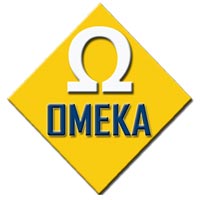
ARDUINO PRO MINI 328 8MHZ microcontroller board
Get Price Quote
PROJECT DESCRIPTION: The original, true-blue Arduino is open-source hardware, which means anyone is free to download the design files and spin their own version of the popular development board. SparkFun has jumped on this opportunity and created all sorts of Arduino variants, each with their own unique features, dimensions, and applications. Now one of those variants has landed in your hands; congratulations! It’s a wild world out there in microcontroller-land, and you’re about to take your first step away from the wonderful – though sometimes stifling – simplicity of the Arudino Pro Mini. In this tutorial, we’ll go over how to set up and use the 3.3V Arduino Pro Mini, everything from assembling the tiny Arduino to programming it. The Arduino Pro Mini is a microcontroller board based on the ATmega328 (datasheet). It has 14 digital inputoutput pins (of which 6 can be used as PWM outputs), 6 analog inputs, an on-board resonator, a reset button, and holes for mounting pin headers. A six pin header can be connected to an FTDI cable or Sparkfun breakout board to provide USB power and communication to the board. The Arduino Pro Mini is intended for semi-permanent installation in objects or exhibitions. The board comes without pre-mounted headers, allowing the use of various types of connectors or direct soldering of wires. The pin layout is compatible with the Arduino Mini. There are two version of the Pro Mini. One runs at 3.3V and 8 MHz, the other at 5V and 16 MHz. The Arduino Pro Mini was designed and manufactured by SparkFun Electronics. The Arduino Pro Mini is intended for advanced users who require flexibility, low-cost, and small size.

Microcontroller Development Board
Get Price Quote
ARM 2129 Development Board ARM 2148 Development Board PIC16F877A Development Board PIC16F628A Development Board PIC16F628A Development Board
Best Deals from Microcontroller Boards

Vending Machine Controller Board
Get Price Quote
50 Piece (MOQ)

microcontroller boards
Get Price Quote
The Arduino Uno R3 is a open source microcontroller board based on the ATmega328 chip. This Board has 14 digital inputoutput pins, 6 analog input pins, Onboard 16 MHz ceramic resonator, Port for USB connection, Onboard DC power jack, An ICSP header and a microcontroller reset button. It contains everything needed to support the microcontroller. Using the board is also very easy, simply connect it to a computer with a USB cable or power it with DC adapter or battery to get started.The Uno differs from all preceding boards in that it does not use the FTDI USB-to-serial driver chip. Instead, it features the Atmega16U2Atmega8U2 up to version R2) programmed as a USB-to-serial converter. While the Arduino UNO can be powered via the USB connection or with an external power supply, the power source is selected automatically.External (non-USB) power can come either from an AC-to-DC adapter (wall-wart) or battery. The adapter can be connected by plugging a 2.1mm center-positive plug into the board's power jack. Also leads from a battery can be inserted in the Gnd and Vin pin headers of the Power connector. The board can operate on an external supply of 6 to 20 volts. If supplied with less than 7V, however, the 5V pin may supply less than five volts and the board may be unstable. If using more than 12V, the voltage regulator may overheat and damage the board. The recommended range is 5v to 12v for Arduino Uno.

Microcontroller Development Board
8,000 Per Piece
Microcontroller Development Board, Laboratory Products, Workshop Equipment

Micro Controller
Get Price Quote
Micro Controller, Uninterrupted Power Supply, Voltage Stabilizers

CPLD Development Board
Get Price Quote
CPLD Development Board, NXP 89V51RD2 Embedded Development Board

Micro Controller
Get Price Quote
Micro Controller, Machine Tools, DC Drives, Stepper Motor Drive